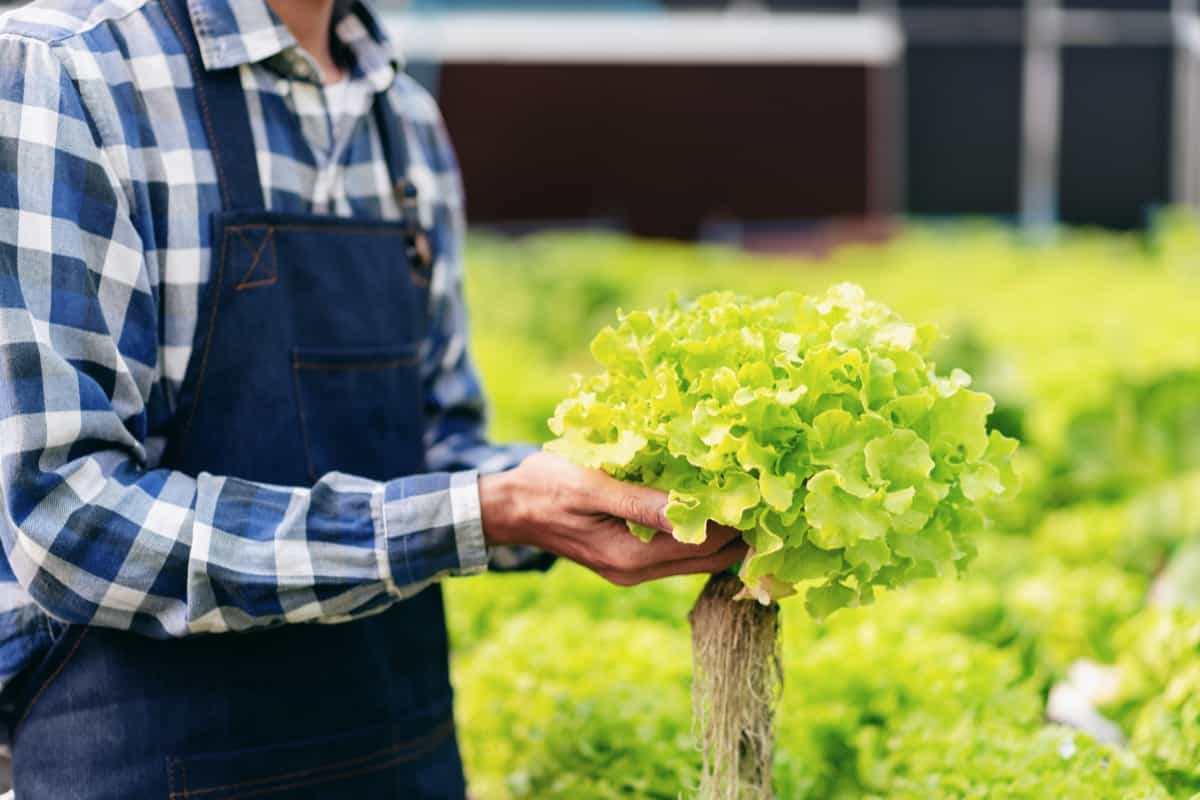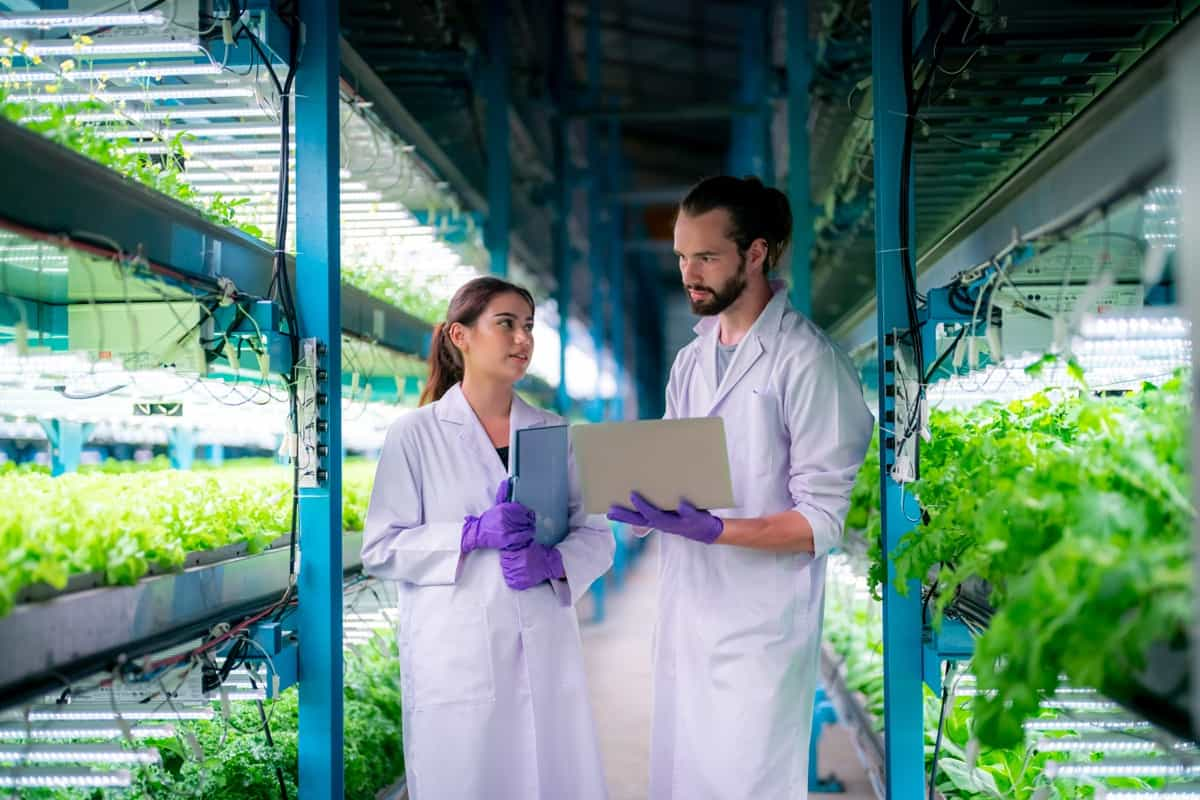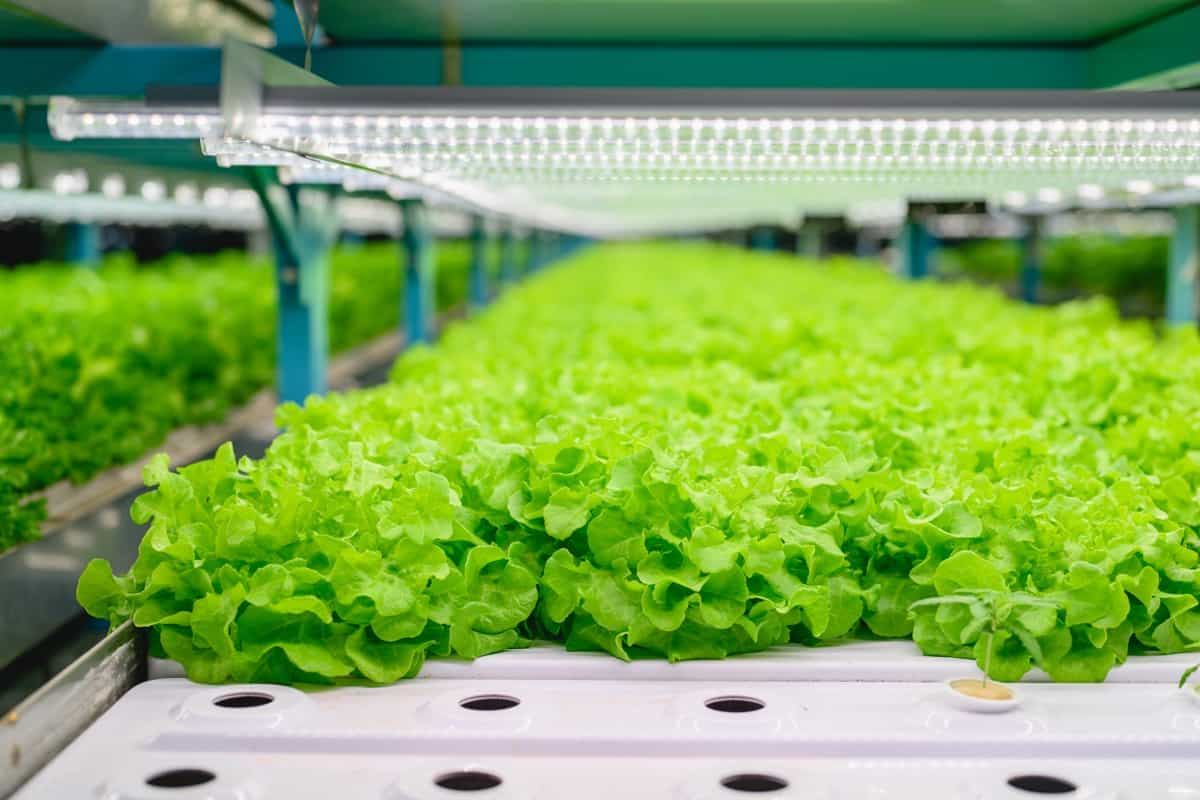With hydroponics, farmers can grow crops faster, with higher yields and greater control over nutrient levels. Additionally, hydroponic farming eliminates the need for harmful pesticides and herbicides commonly used in traditional agriculture. Moreover, this method allows year-round cultivation regardless of climate conditions or seasonal fluctuations – an essential factor considering Australia’s diverse weather patterns across different regions.

Hydroponic Farming in Australia
Understand the Basics
Hydroponic farming is a unique and innovative way of growing plants without using soil. This method has gained popularity in Australia due to its numerous benefits and the ability to produce high-quality crops in a controlled environment. Hydroponic farming presents an exciting opportunity for Australian growers to overcome challenges associated with traditional agriculture while increasing productivity and sustainability. Hydroponic farming has gained significant popularity in Australia in recent years.
Find the Right Location
Finding the right location for your hydroponic farm involves considering water accessibility, climate suitability, market proximity, available land size, and potential environmental impacts. Access to water is essential as hydroponics relies heavily on a constant and reliable supply. Climate plays a significant role in hydroponic farming.
Australia has diverse climatic conditions, so it’s important to choose a location that suits the specific requirements of your crops. Furthermore, proximity to markets should be taken into account. Another aspect to consider is the size of the land available. Assess your needed space and select an appropriate site based on your production goals.
Get the Essential Equipment and Supplies
Firstly, you’ll need a good quality grow tent or greenhouse. Select a greenhouse size that fits your needs and allows for proper air circulation is important. Next, you’ll need a reliable hydroponic system. Various types are available, such as nutrient film technique (NFT), deep water culture (DWC), or drip irrigation systems. Choose one that suits your crop type and space constraints. To provide nutrients to your plants, invest in high-quality hydroponic nutrients specifically formulated for different growth stages.
In addition to that, don’t forget about pH testing kits and adjusters to maintain the ideal pH level of your nutrient solution. Lighting is crucial in hydroponics since plants rely on artificial light sources instead of sunlight. LED lights are recommended due to their energy efficiency and customizable spectrum options. Other essential supplies include a growing medium (such as perlite or coco coir), air pumps/air stones for oxygenation of the nutrient solution, timers for automated lighting schedules, and thermometers/hygrometers to monitor environmental conditions accurately.
In case you missed it: 15 Best Plant Nurseries in Melbourne (Australia): Top Garden Centers to Buy all Kinds of Plants

Best Suitable Crops
Leafy greens like lettuce and spinach thrive in hydroponics due to their fast growth rate and high demand. Herbs such as basil, parsley, and cilantro are also excellent choices for hydroponics. Strawberries are another popular crop among Australian hydroponic farmers. Tomatoes are perhaps one of the most sought-after crops for hydroponics in Australia.
Other suitable crops for hydroponic farming in Australia include cucumbers, peppers (capsicum), beans, and microgreens like kale or radish sprouts. These crops offer great versatility in culinary uses and have a consistent demand from consumers.
Manage Nutrients Effectively
Nutrient management in hydroponics involves carefully monitoring and adjusting nutrient levels to ensure optimal plant growth. Regularly testing the nutrient solution’s pH and electrical conductivity (EC) levels is important for maintaining a balanced growing environment. Understanding the specific nutritional requirements of different cultivated crops is also essential.
Each crop may have varying needs for macronutrients (such as nitrogen, phosphorus, and potassium) and micronutrients (like iron, manganese, and zinc). Furthermore, implementing a proper irrigation system that delivers nutrients evenly throughout the root zone is critical for effective nutrient absorption by the plants.
Control Pests and Diseases
Implementing strict sanitation practices such as regularly cleaning equipment and maintaining a clean growing environment can help minimize the pests and diseases taking hold. Additionally, practicing good hygiene by washing hands thoroughly before handling plants or entering the growing area can reduce the chances of introducing pathogens. Regular monitoring is essential to catch any signs of pest infestations or disease outbreaks early on.
Integrated Pest Management (IPM) techniques are widely used in hydroponics to control pests without relying solely on chemical pesticides. Hydroponic farmers must stay informed about common pests and diseases affecting their crops to implement effective pest management practices. Understanding the life cycles and behaviors of these organisms allows for better-targeted interventions.
Optimize Environmental Conditions
With the ability to control variables such as temperature, humidity, and lighting, growers can create an ideal environment for their crops to thrive. Different crops have different temperature requirements, so it’s important to research and understand the optimal range for each specific plant. Humidity also plays a significant role in hydroponic farming in Australia. Utilizing humidifiers or dehumidifiers can help maintain optimal humidity levels throughout the growing cycle.
In case you missed it: From Egg Layers to Meat Birds: Best Chicken Breeds for Australia

In addition to temperature and humidity control, adequate lighting is essential for photosynthesis and plant growth. Many hydroponic farmers use artificial lights such as LED or fluorescent bulbs that emit specific wavelengths of light tailored to meet their crop’s needs. Monitoring and adjusting pH levels within your nutrient solution is vital for achieving optimum growth rates and plant nutrient uptake.
Manage Water and Conserve It
Water is a major resource that plays a crucial role in hydroponic farming in Australia. In Australia, where water scarcity is a significant concern, efficient water management becomes even more critical for hydroponic growers. Farmers can regularly monitor pH levels and nutrient concentrations to ensure optimal plant growth while reducing water waste.
Another effective method of conserving water is through the use of drip irrigation systems. Additionally, installing timers on irrigation systems helps control watering intervals and reduces excess usage. Proper drainage techniques are also essential for managing water effectively in hydroponic farms. By using appropriate growing media that facilitates good drainage while retaining enough moisture for plant uptake, farmers can strike a balance between hydration and avoiding water wastage.
Marketing Strategies
With the increasing demand for fresh-sourced food, there is a great opportunity for hydroponic farmers to capitalize on this trend. Branding plays the main role in attracting customers. Develop a unique brand that reflects the quality and freshness of your produce. Next, establish strong relationships with local restaurants, cafes, and grocery stores. Offer them special deals or discounts to encourage them to stock your products.
Create a professional website showcasing your farm and products. Use your hydroponically grown produce on social media platforms to engage with potential customers through visually appealing content. By partnering with influential individuals who align with your values, you can build credibility within the industry.
Legal and Regulatory Considerations
Licensing and Permits: Ensure you have all the licenses and permits required to operate a hydroponics business in Australia. This may include obtaining a horticulture or farming license, water extraction permits, or environmental impact assessments.
Food Safety Regulations: Adhere to the strict food safety standards set by relevant authorities. This includes properly handling, storing, labeling, and packaging your hydroponically grown produce.
Water Usage: Stay informed about water restrictions or allocations in your region and any reporting obligations related to water consumption.
Employment Laws: Familiarize yourself with employment laws such as minimum wage requirements, working hours regulations, workplace health and safety standards, and workers’ compensation insurance.
Environmental Regulations: Complying with environmental regulations is essential to minimize negative impacts on local ecosystems while maximizing sustainable practices within your operation.
In case you missed it: Australia Pig Farming Business Plan: Solid Strategies for High Profits

Conclusion
Hydroponic farming has become increasingly important in Australia due to its numerous benefits and advantages. In a country with limited arable land and unpredictable weather conditions, hydroponics offers a sustainable solution for agricultural production. By cultivating plants in nutrient-rich water solutions instead of soil, hydroponic farmers can maximize crop yields while minimizing using resources such as water, pesticides, and fertilizers.
- Feed Your Flock for Less: Top 10 Tips to Save on Chicken Feed
- Ultimate Guide to Ossabaw Island Hog: Breeding, Raising, Diet, and Care
- Hatching Answers: The Top 10 Reasons Your Chickens Aren’t Laying Eggs
- Eggs and Economics: Breaking Down the Cost of Raising Backyard Chickens
- Defend Your Greens: Proven Methods to Keep Iguanas Out of Your Garden
- Ultimate Guide to Cinnamon Queen Chicken: A Comprehensive Guide for Beginners
- Ultimate Guide to California Tan Chicken: Breeding, Raising, Diet, Egg-Production and Care
- Ultimate Guide to Marsh Daisy Chicken: Breeding, Raising, Diet, and Care
- 10 Types of Chicken Farming Businesses You Can Start for Profits